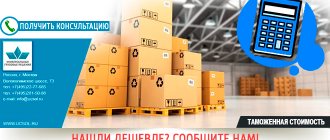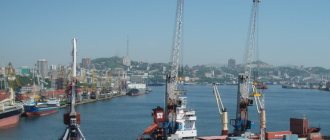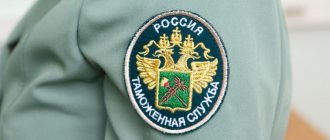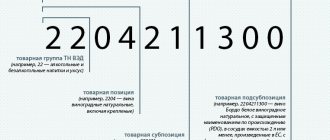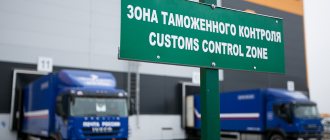The document defines the goals, objectives and principles of the creation and operation of a system for labeling and traceability of goods; it describes the requirements for a special state information system (GIS).
The Concept states that the labeling system consists of several elements:
- GIS;
- interaction between producers of goods, participants in their circulation, consumers of goods, government bodies monitoring the turnover of labeled goods;
- the regulatory framework governing relations in the field of product labeling, including data circulation;
- organizational and functional model of the system of labeling and traceability of goods.
It is expected that the labeling system will make it possible to quickly obtain reliable information about the movement of goods within the activities of organizations, and this will lead to a reduction in the volume of illegal trafficking of products. For the economy, labeling of goods will lead to increased collection of taxes and customs duties, for citizens - to ensure safety and protection of their health.
Regulations
Cost and payment procedure
• The cost of the service is determined in accordance with current tariffs. The cost depends on the scope of work and is formed taking into account the amount of time spent by the expert
• Payment in the form of cash and non-cash payments (based on the issued Invoice using the details specified therein by bank transfer or cash payment)
Procedure
1. Submitting an application and the required package of documents
2. After preliminary approval, execution of an agreement, which stipulates the procedure and conditions of work, deadlines for completing the order, payment and a report on the work performed
3. Confirmation of payment for the service
4. Conducting an examination
5. Transfer of reporting documents
6. After the service has been completed by the Contractor, the parties sign an act of provision of services
Grounds for refusal
• No prepayment
Principles of product labeling
The coordinator of the functioning of the labeling system is the Ministry of Industry and Trade of the Russian Federation. And the role of GIS operator can be assumed by a federal executive body or a private partner on the basis of a public-private partnership agreement.
The organization of the product labeling process is based on several principles:
- mandatory labeling of goods by means of identification;
- the obligation of participants in the circulation of goods to label the goods (the procedure is established by the Government of the Russian Federation);
- minimizing the costs of participants in the circulation of goods when introducing product labeling;
- the possibility of a voluntary experiment on product labeling;
- identification of each item of goods by marking;
- registration of all stages of turnover of goods - from production or import into the territory of the Russian Federation to retail sale using cash registers or to other withdrawal of goods from circulation;
- establishing the amount of payment for the formation of a unit of product labeling code;
- providing conditions for the development of an effective system of public control in the area of circulation of labeled goods.
Participants in the circulation of goods that are subject to marking by means will have to, in addition to the marking of goods themselves, send to the GIS information about the circulation of marked goods (including through electronic document management systems) and the disposal of marked goods from circulation. To do this, they will need to purchase equipment for applying identification means to goods and devices for verifying applied identification means to goods.
Product labeling: basic terms
Marking is a set of actions to identify a unit or a set of units of goods by applying an identification means or a control mark with an identification means. Necessary to ensure traceability of goods as they move through the distribution network.
The means of identification is a unique sequence of symbols in the form of a bar code. It may also be presented with another means of automatic identification or recorded on a radio frequency tag.
A control (identification) mark is a strict reporting form with elements of protection against counterfeiting. Contains an identification tool.
Traceability of the movement of goods is a set of measures that ensure registration of the movement of goods from the moment the identification means is applied, as well as the automated provision of legally significant information about completed transactions with a unit of goods and their processing in GIS. There are two types of traceability: physical (provided through markings) and documentary (provided through the transfer of data on the movement of goods in accompanying documents - invoices, tax documents, etc.).
The system of labeling and traceability of goods is a mechanism for ensuring the achievement of goals and tasks of traceability of goods. It consists of interrelated elements of an information technology, organizational and regulatory nature.
Re-export of unidentifiable goods is not possible
Belyavsky Sergey Cheslavovich, expert in the field of judicial practice of resolving economic disputes
Kobrinets Marina Viktorovna, lawyer
When purchasing goods abroad, entrepreneurs must remember the need to accept them in terms of quantity and quality. Often foreign partners are accommodating and allow you to inspect the goods upon arrival in the Republic of Belarus. At the same time, the parties do not take into account the provisions of the law - it is not always possible to return customs payments made. If goods are damaged or have defects, they must be clearly identified when placed under re-export procedures. Otherwise, only the state will benefit.
Example At the customs clearance point, Declarant LLC placed goods belonging to it under the customs procedure of release for domestic consumption. They were transported in bulk in wagons; after successful customs clearance, they were moved to the access roads of a private enterprise and unsealed. After inspection by a specialist, due to the discovery of deficiencies, Declarant LLC submitted an application for the release of goods in accordance with the customs re-export procedure. The customs authority refused this, recommending that the goods be placed under the export procedure. Disagreeing with the actions of the customs authority, Declarant LLC went to court. When making a decision, the customs authority was guided by the fact that the goods had left the customs control zone, the integrity of the seals as a means of identification was violated The court took the position of the customs authority. Failure to identify goods is grounds for refusal of the re-export procedure. When making a decision to refuse to satisfy the demands of Declarant LLC, the court proceeded from the provisions of sub-clause. 1 clause 1 art. 125, paragraph 2 of Art. 239, paragraph 1, 4 art. 325 TMK EAEU.
The customs re-export procedure applies to foreign goods and EAEU goods. In accordance with it, they are exported from the customs territory of the EAEU without paying import customs duties, taxes, special, anti-dumping, countervailing duties and (or) with a refund (offset) of such amounts in accordance with Art. 242 TMK of the EAEU, and EAEU goods - without paying export customs duties, subject to the conditions of placement under this customs procedure <*>.
The re-export procedure for goods exported from the customs territory due to non-fulfillment of the terms of the transaction, including in terms of quantity and quality (imported in accordance with the customs procedure for release for domestic consumption), is possible if the following conditions exist in total <*>:
1) the procedure is declared within a year from the date of release of goods for domestic consumption;
2) the customs authority received information confirming a violation of the terms of the transaction under which goods were imported into the territory of the EAEU (you can submit the results of the examination, the conclusion of the competent authorities);
3) the goods remained unused and were not repaired;
4) identification of goods by the customs authority is possible;
5) the prohibitions and restrictions established by Art. 7 TmK EAEU.
If any of these conditions are violated, the customs authority will refuse to carry out the re-export procedure.
If defects in goods are discovered outside the customs zone, the declarant must have sufficient documents on the basis of which the goods can be identified and which will confirm the preservation of the goods in an unchanged condition. However, the legislation does not contain an exhaustive list of grounds for identification. What evidence will be sufficient to prove the safety of goods unchanged is decided by the court in each specific case. Therefore, when importing goods, it is important to take care of their identification in advance. It is best if the declaration indicates the serial number, batch number or other distinctive features unique to these goods.
It should be taken into account that some groups of goods (for example, vegetables, fruits, bulk and liquid goods that are not transported in individual packaging) do not have identifiers. In this regard, their acceptance and inspection must be carried out in the customs control zone, in a temporary storage warehouse. The declarant has the right to inspect, measure, carry out cargo operations with goods, take samples and specimens, get acquainted with the results of research and testing available at the customs authority, attract experts to clarify information about the declared goods, as well as use other powers and rights provided for by the EAEU TMK.
Identification of goods and vehicles
The procedure for designating customs control zones.
The limits of the customs control zone are indicated by rectangular signs, on a green background of which there is an inscription in Russian and English in white, respectively: “Customs control zone” and “Customs control zone”. These signs are the main means of designating the customs control zone. The customs control zone can be designated by applying the inscription “Customs control zone” directly on the fencing structures and walls of the premises that make up its perimeter.
It is allowed to replace the inscription in English with an inscription in any other language that is appropriate for use when creating a specific customs control zone.
The customs control zone is designated along its boundaries at points of intersection with transport routes, at places where persons, goods and vehicles cross the customs border. When designating a customs control zone, additional boards may be used with information about its specific limits, established places of crossing its border, a list of persons having access to it, means of its designation and other circumstances related to its functioning.
The designation of a permanent customs control zone is made after a decision on its creation is made, as well as in cases where, in accordance with the Code, the locations of goods and vehicles are customs control zones.
The limits of the temporary customs control zone may be indicated by fencing tape, as well as temporarily installed signs. In this case, the use of improvised materials and means is allowed. The designation of a temporary customs control zone is made only after a decision has been made to create it.
Identification of goods and vehicles, required in accordance with the provisions of the Customs Code of the Customs Union, is a set of measures used by customs authorities aimed at establishing the conformity (identity) of goods and vehicles placed under the selected customs procedure (see also Article 170 of the Law).
Identification is carried out by applying seals, seals, applying digital, alphabetic and other markings, identification marks, stamping, sampling and sampling, detailed description of goods, drawing up drawings, making large-scale images, photographs, illustrations, using shipping and other documentation, as well as in other ways.
Identification means can be destroyed or changed (replaced) only by customs authorities or with their permission, except in cases where there is a real threat of destruction, loss or significant damage to goods and vehicles. The customs authority is immediately notified of changes, removal, destruction or damage to means of identification and is provided with evidence of the existence of the specified threat. On the change, removal, destruction or replacement of means of identification, the customs authority draws up an act in the form approved by the federal executive body authorized in the field of customs affairs.
Identification of goods is carried out in most cases during customs control in such forms as - checking the marking of goods with special marks, the presence of identification marks on them; — customs inspection of goods carried out in order to identify goods for customs purposes; — customs inspection of goods and vehicles.

